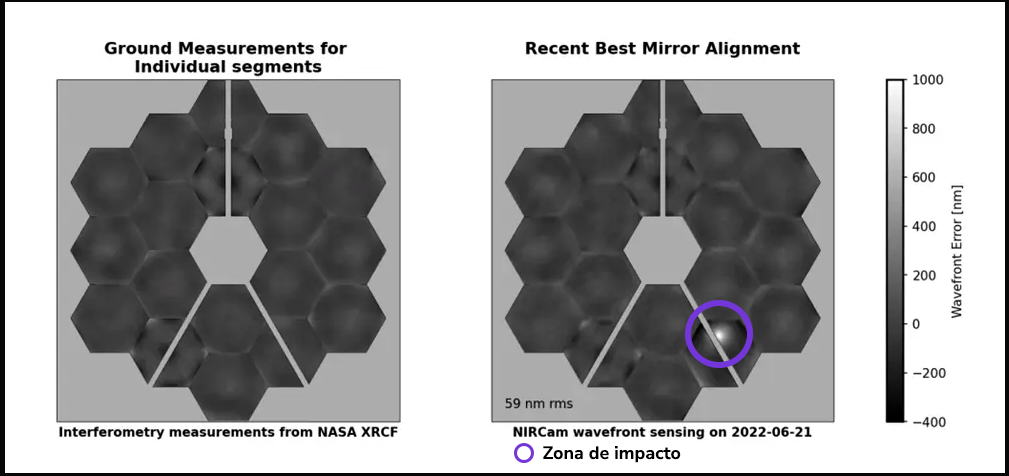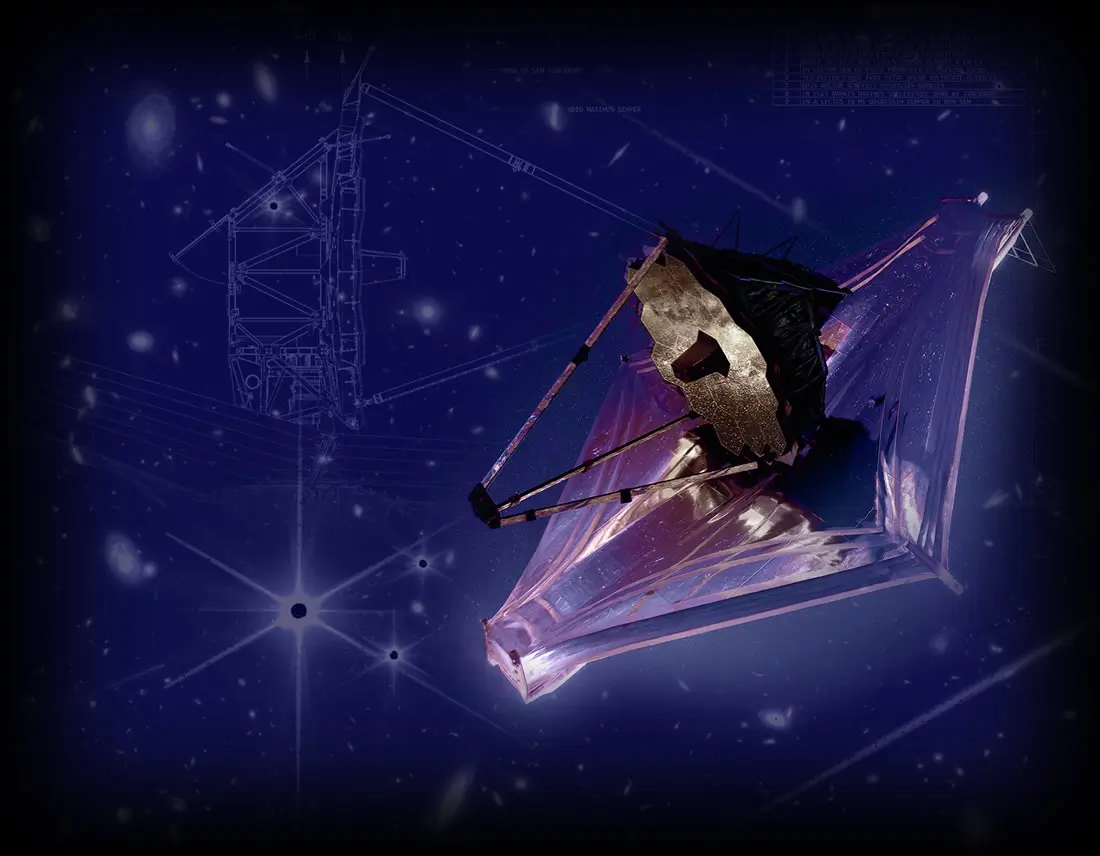The meteorite hit segment C3 of the mirror, composed of 18 hexagonal mirrors and, according to the checks carried out later, the optical quality of said segment has decreased significantly with respect to the tests performed to it before the James Webb abandoned our planet.
This, with the other 17 mirrors in their current conditions does not raise a serious problem, but it does put on alert to NASA of the existing risks introducing the possibility that the telescope is not able to reach the maximum of its expected useful life, 20 years.
Micrometeoritos shocks so far
Before the mission took off, NASA made different simulations on the possible impact of meteorites against the mirrors of the James Webb and, based on those results, a useful life was calculated to the 20 -year -old telescope.
Unlike what happened with the Hubble - which could be repaired and updated by the space ferry twice - it is almost impossible to send a crew to try to repair the affected mirror on a trip of 1.6 million kilometers.
Of the six significant impacts that the telescope has had (another 19 have had no detectable effect), five of the resulting deformations were corrected through the realignment of mirrors in a simple way.
However, the sixth is the one that caused the team in charge of the Webb, as it caused the equivalent of a " stain " in segment C3, which cataloged as " significant and irreparable ."

In the image on these lines we can observe the damage in the mirror, which is remarkable. Taking into account that the telescope is expected a half -life of 20 years, the new NASA study based on the analysis of the effect of these micrometeoritos - and the magnitude of the sixth - affirms that they are now not totally sure to what extent that expiration date will be fulfilled. Or, rather, if you will really reach those 20 years of life with moderately good image quality, due to this increase in the frequency of impacts with respect to the initial forecasts.
The NASA team is making new statistical models based on the new information collected in recent months. It is more than possible, they affirm that the webb is "more susceptible to micrometeoritos damage of what predicted the modeling prior to the launch."
All this has happened in just a few weeks and without having gone through the obstacle of the cloud of particles left behind by the comet Halley, which will reach in May 2023. Hopefully this type of impact is not as common as so far and its useful life is not reduced.


































